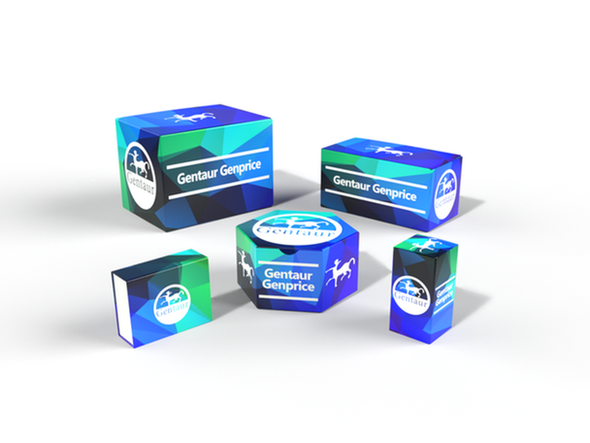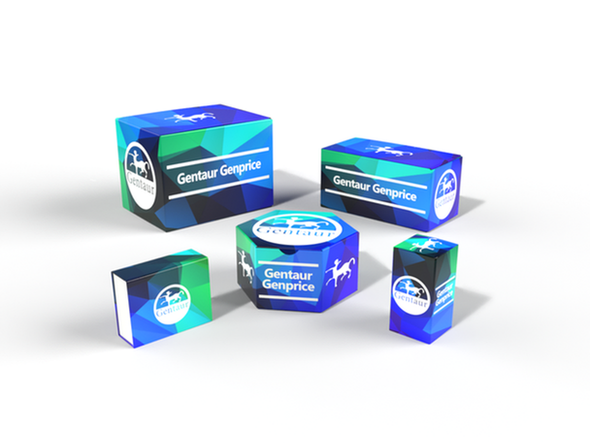Description
WDR3 Antibody | 27-212 | Gentaur UK, US & Europe Distribution
Host: Rabbit
Reactivity: Human
Homology: N/A
Immunogen: Antibody produced in rabbits immunized with a synthetic peptide corresponding a region of human WDR3.
Research Area: Transcription
Tested Application: E, WB
Application: WDR3 antibody can be used for detection of WDR3 by ELISA at 1:1562500. WDR3 antibody can be used for detection of WDR3 by western blot at 1 μg/mL, and HRP conjugated secondary antibody should be diluted 1:50, 000 - 100, 000.
Specificiy: N/A
Positive Control 1: Cat. No. 1201 - HeLa Cell Lysate
Positive Control 2: N/A
Positive Control 3: N/A
Positive Control 4: N/A
Positive Control 5: N/A
Positive Control 6: N/A
Molecular Weight: 106 kDa
Validation: N/A
Isoform: N/A
Purification: Antibody is purified by peptide affinity chromatography method.
Clonality: Polyclonal
Clone: N/A
Isotype: N/A
Conjugate: Unconjugated
Physical State: Liquid
Buffer: Purified antibody supplied in 1x PBS buffer with 0.09% (w/v) sodium azide and 2% sucrose.
Concentration: batch dependent
Storage Condition: For short periods of storage (days) store at 4˚C. For longer periods of storage, store WDR3 antibody at -20˚C. As with any antibody avoid repeat freeze-thaw cycles.
Alternate Name: WDR3, FLJ12796, DIP2, UTP12
User Note: Optimal dilutions for each application to be determined by the researcher.
BACKGROUND: WDR3 is a nuclear protein containing 10 WD repeats. WD repeats are approximately 30- to 40-amino acid domains containing several conserved residues, which usually include a trp-asp at the C-terminal end. Proteins belonging to the WD repeat family are involved in a variety of cellular processes, including cell cycle progression, signal transduction, apoptosis, and gene regulation.This gene encodes a nuclear protein containing 10 WD repeats. WD repeats are approximately 30- to 40-amino acid domains containing several conserved residues, which usually include a trp-asp at the C-terminal end. Proteins belonging to the WD repeat family are involved in a variety of cellular processes, including cell cycle progression, signal transduction, apoptosis, and gene regulation.




![WDR3 Antibody (N-term) [APR03707G] WDR3 Antibody (N-term) [APR03707G]](https://cdn11.bigcommerce.com/s-1rdwiq712m/images/stencil/590x590/products/55363/55667/gentaur-genprice__26005.1661610467__29809.1661628092__75433.1661676199__77988.1661684280__64362.1661692443__91922.1661836179.png?c=1)





